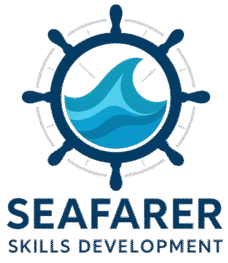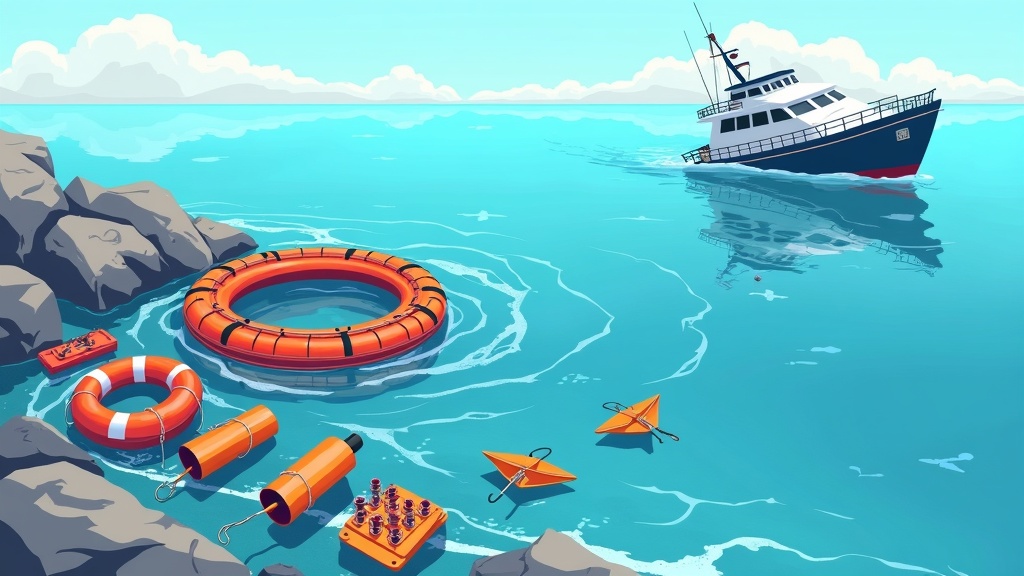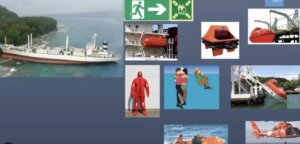Personal survival techniques on the open water really matter, no matter if I’m out for a quick trip or on a big adventure. I know that calm days can turn rough, and being ready helps me handle surprises much better. Whether I’m learning how to survive a capsizing boat, packing my open water emergency survival kit, or just double-checking my personal safety tips on water, these habits keep me safer and more confident each time I head out.
I’ve seen that a little preparation goes a long way when it comes to water safety survival essentials. Knowing what tools and skills to bring on board, how to use a life raft, and picking out the best survival gear for boating all make a difference if I end up in an emergency. Here, I break down the steps and practical tips that help keep me afloat physically and mentally during stressful times on open water.
Know Your Environment and Plan Ahead
I never underestimate the power of weather and water conditions. Before setting out, I check forecasts and talk to others who know the area well. Learning about potential hazards like fast currents, debris, or shifting weather patterns makes a big difference. I often jot down key local emergency numbers and make sure someone on land knows my route and plans. While planning may feel like extra work, I’ve found that even a few extra minutes spent prepping and gathering data multiplies the odds of a safe and fun day.
Checklist Before Heading Out
- Check weather and tides using trustworthy sources (like the National Weather Service).
- Tell a friend or family member my departure, route, and estimated arrival time.
- Inspect my boat or kayak for any damage or leaks.
- Be sure all signaling equipment and survival gear for boating are on board and in working shape.
- Pack a paper map or chart as a backup navigation tool in case electronics fail.
- Review the local marine traffic patterns and restricted zones where boats are not allowed.
This planning keeps me from making quick, risky choices just to beat a storm or return on time. Having good information is a key part of open water survival techniques. In addition, early identification of alternative landing spots can ease the stress of changing conditions.
Prepare and Organize an Open Water Emergency Survival Kit
I find real peace of mind knowing I have an open water emergency survival kit that is specific to my trip. Every kit I pack includes basics like a whistle, signal mirror, strong flashlight, waterproof matches, multipurpose tool, and enough food and water for everyone on board. It might feel like a lot, but it’s all light and fits in a small, waterproof bag. If you’re newer to open water trips, stepping up your preparations with a thoughtfully packed kit can mean the difference between waiting comfortably for help and a rougher ride.
What I Include in My Survival Kit
- Waterproof pouch with ID, local emergency contacts, and boat registration.
- Energy bars and high-calorie, nonperishable food.
- Sealable bags with water purification tablets and a compact water filter.
- Basic first aid kit with bandages, antiseptic, tweezers, and gloves.
- Thermal blankets and compact rain poncho.
- Bright waterproof flashlight and extra batteries.
- Signal mirror, whistle, and flares.
- Simple emergency fishing kit (line, hooks).
- Duct tape and multitool for small repairs.
- Pain relievers and personal medicines labeled and stored securely.
These items help me handle most situations, big or small. I practice using each item before going out, so I don’t fumble in a real emergency. Labeling gear in the kit also helps my crew if they need to grab something quickly under stress.
Learn and Practice How to Survive a Capsizing Boat
A capsizing boat is one of the most stressful open water emergencies. I learned early on that panic uses up energy, so I train myself to move calmly and focus on steps that matter. If I know my vessel might flip or has taken on water, I scan for floating objects and double-check my life jacket is secure and snug. Being ready for cold water immersion, knowing how to spot hypothermia symptoms, and reviewing safe positions have made a huge difference for me and those I’ve taught.
Steps I Take During a Capsize
- I grab my life jacket and secure it tightly.
- I stay with the boat if possible, since it’s easier for rescuers to spot.
- I avoid swimming unless land or another boat is close and the water is safe.
- I climb onto the overturned hull or raft if I can, to conserve energy and stay dry as much as possible.
- I keep a positive attitude by focusing on breathing slowly and doing one thing at a time.
These steps aren’t flashy, but they keep me focused and save my strength. Practical, open water survival techniques like these make an enormous difference in tough moments. If disorientation strikes, simple reminders from laminated cards in my kit guide my next move.
Wear and Use a Life Jacket Properly
I always wear a life jacket, even if I’m a strong swimmer or the water looks calm. A properly fitted life jacket keeps my head above water, preserves body heat, and lets me float with less effort if I get tired or cold. I look for a jacket that fits close but doesn’t limit movement, and I check the U.S. Coast Guard approval stamp. Jackets should match the size and weight of the wearer, and every person on board needs one of their own. Remember, modern models are now more comfortable than ever—there’s never a good reason not to gear up.
How I Check My Life Jacket
- I inspect buckles and straps for wear and tear.
- I confirm foam inside the jacket has no breaks or hard spots.
- I adjust straps so the jacket fits snugly; if it rides up past my ears, it’s too loose.
- I check that the whistle and reflective patches are securely attached and easy to reach.
Having the right life jacket is one of the best open water survival techniques. It’s also a top priority in most water safety survival essentials guides.
Understand How to Use a Life Raft
Knowing how to use a life raft takes stress out of emergencies. I look for rafts that are the right size for my group and check the expiration date on their CO₂ cartridges if they’re inflatable. I read the instructions before heading out to avoid any surprises. Some rafts come with easy assembly features, making practice drills a breeze for all crew members.
My Life Raft Basics
- Inflate the raft only when needed, as inflation can take a minute or so.
- Board one person at a time unless the emergency requires faster action.
- Share space evenly to keep the raft balanced.
- Secure the painter line (the attached rope) to the boat or hold onto it to avoid drifting apart.
- Use the canopy or cover (if available) for shelter from cold, rain, or sun.
- Familiarize myself with included gear pockets and storage points so valuable gear is easy to reach and organize.
From watching rescue training and personal practice, I know that most rafts include pockets for the best survival gear for boating, like bailing cups, patch kits, or emergency paddles. Making sure everyone on board learns how to board or stabilize a raft helps avoid confusion when minutes matter.
Pace Yourself and Conserve Energy
I learned through real experience that pacing my efforts is super important in any situation on open water. Swimming against strong currents or waves wastes strength. If I’m separated from my raft or boat, I try to float on my back or use the HELP (Heat Escape Lessening Position) if the water is cold, conserving warmth and reducing effort. Conserving energy isn’t just about swimming; I avoid unnecessary talking, try to move minimally, and keep my group close together for warmth and morale.
How I Conserve Energy
- Float rather than swim whenever possible to avoid getting tired too soon.
- Keep my knees up and arms close to my chest when in cold water.
- Work with currents instead of fighting them.
- Take slow breaths to stay calm and reduce stress.
- Ration supplies carefully, planning for a longer wait if necessary.
Staying relaxed, as much as possible, keeps me thinking clearly and saves energy for when I truly need it. Small exercises to wiggle fingers and toes can also fight numbness without tiring me out.
Stay Visible to Rescuers
Visibility makes a big difference during a rescue. I wear brightly colored clothing, use reflective tape on my gear, and keep signal gear close at hand in my open water emergency survival kit. Flares, an emergency whistle, or a signal mirror help attract attention. Timing the use of my signaling devices matters—a flare is most effective when I see a plane or distant boat, while my whistle can keep nearby help aware of my location.
How I Try to Stay Seen
- I wave arms slowly, use a signal mirror, or blow my whistle every few minutes.
- If on a raft, I make sure the cover is visible and upright.
- I check the sky for rescue boats or aircraft and use my signal tools at the right angle to catch the light or make noise.
- I wear a bright hat or attach a colorful scarf to my paddle or gear for added contrast.
Being easy to find on the water is one of the most practical personal safety tips on water. I always practice using my signal tools before a trip so I’m confident in an emergency. Reviewing different hand signals or motions can also help communicate with rescuers who may be far off or unable to hear my voice.
Protect Yourself from the Elements
Water, wind, sun, and cold all play a big role in open water survival. I cover up exposed skin, use hats or bandanas, and protect my eyes with sunglasses. Hydration matters, even if I don’t feel thirsty. I avoid drinking seawater; purification tablets and filters in my survival kit come in handy if rescue takes a while, and I try to collect rainwater if possible by spreading out ponchos or tarps.
Tips I Use for Weather Protection
- I create makeshift shade using a poncho or spare clothing.
- I use my survival blanket to stay warm, especially if the water or wind is cold.
- I drink fluids regularly and keep my mouth closed when waves hit to avoid swallowing salt water.
- I wrap a scarf or cloth around my neck to prevent sunburn or retain heat at night.
Simple habits like these keep me healthier and more comfortable when waiting for help. I always check my kit for extra sunscreen packets and chapstick, as wind and sun can dry out skin quickly.
Mental Readiness and Staying Calm
Mental attitude shapes my chances for survival as much as equipment does. I find it helpful to focus on what I can control, not what went wrong. Slow, deep breathing helps keep panic away, and positive self-talk (“I’m prepared. I know what to do.”) keeps my spirits up even when things look bad. Visualization of successful rescues or recalling past challenges I’ve overcome helps me push back fear when things seem overwhelming.
My Strategies for Managing Stress
- I remind myself of the steps I’ve practiced.
- I compartmentalize my worries; do what I can now, and let the rest be for later.
- I keep an eye out for others in my group, since helping someone else often helps me stay focused and busy.
- I crack a quiet joke or sing a song to myself to break a fearful cycle and keep time moving.
Thinking things through instead of reacting with fear always gives me better results. Practicing meditation or mindful breathing at home can help make these stress strategies second nature in a real emergency.
Choose the Best Survival Gear for Boating
From my own outings, the best survival gear for boating is whichever gear does the job every time. I choose tools that are rugged, easy to use, and resistant to water, salt, and sun. I replace batteries once a year and update first aid supplies each season. It’s also smart to read real-world reviews of gear from other boaters—what stands up over time makes the cut for my pack.
Gear I Rely On Most
- Automaticinflating PFD (Personal Flotation Device).
- Dualpurpose flashlight and strobe for signaling at night.
- Wateractivated personal locator beacon (PLB).
- Manual and automatic bilge pumps.
- Heavyduty multitool with built-in screwdrivers, knife, and pliers.
- Reusable water bottle with integrated filter.
- Thermal blankets and backup dry clothing.
- Marine radio with extra batteries and a backup emergency contact list written on waterproof cards.
I practice using this gear at home so nothing feels new or unfamiliar under stress. If I add a new tool, I take a quick test run before including it in my main kit. Simple modifications, like adding glow-in-the-dark tape around key gear, makes it easier to track down items in low light.
Develop Good Personal Safety Habits on Water
Being proactive is the single habit that’s helped me the most. I run safety drills with friends and know everyone’s role before leaving shore. I check weather midtrip using a waterproof radio or my phone in a dry bag, just in case things change quickly. Keeping a good attitude, prepping my open water emergency survival kit, and running through routine safety checks helps me enjoy every trip a whole lot more. Not only does this routine keep me safe, it brings peace of mind to my friends and family, too.
Water Safety Survival Essentials I Always Follow
- Wear a life jacket, no exceptions.
- Keep my survival kit in reach, not stowed away.
- Practice swimming and floating in full gear.
- Stay sober; no alcohol before or during any boating trip.
- Assign a “watch” role in larger groups so someone is always alert for changes.
- Debrief after each trip to talk about what went well and what could be improved for next time.
Good routines and solid gear keep me safe and give me extra confidence during any open water activity. Making a habit of reviewing even small close calls ensures we’re always improving and updating our plans.
Common Questions and Troubleshooting for Open Water Survival
What if I panic in cold water?
Cold water makes breathing harder, but focusing on slow, steady breaths helps calm things down. I float if possible to let my body adjust gradually and do my best to keep my head out of the water. Repeating a simple mantra or counting breaths helps with control and keeps panic at bay even when the sudden cold shock feels overwhelming.
How do I signal for help if my radio fails?
My whistle, signal mirror, or handheld flare are all reliable backups. I make wide movements with my arms, and if a plane or boat is spotted, I use the mirror in short, direct flashes to get their attention. If all else fails, striking metal against metal can produce attention-grabbing noises that carry surprisingly far over water.
What if I’m separated from my group?
I stay where I am if safe, make myself visible, and trust others to do the same. Swimming after someone increases risk, so using signal tools and staying put works best unless shore is clearly in sight and close by. At night, I keep my strobe or flashlight on at regular intervals to remain seen, and use whistle bursts every few minutes.
Next Steps and Your Personal Survival Checklist
I found that the more prepared I am, the more I can relax and actually enjoy being out on the water. Practicing drills, updating my survival kit, and learning new open water survival techniques has made every trip safer. Sharing this mindset with new crew members or friends creates a culture of awareness and teamwork.
Action Plan to Improve Personal Survival on the Water:
- Review and update your open water emergency survival kit before each season.
- Practice donning a life jacket, using a life raft, and signaling for help at least once a year.
- Learn the basics of first aid, water rescue, and calm breathing techniques.
- Stumble upon nearby water safety courses—joining a local class can take your skills up a notch.
- Regularly run drills for common emergencies and review what worked and what could go better.
Preparing for trouble makes adventures much more enjoyable and safer. Even small changes add up to a big safety boost. Wrapping up, staying attentive to these personal survival techniques doesn’t just keep you safe—it gives you the freedom to make the most out of every trip you take on the water. If you have more questions or want to share what’s worked for you, let me know below!







